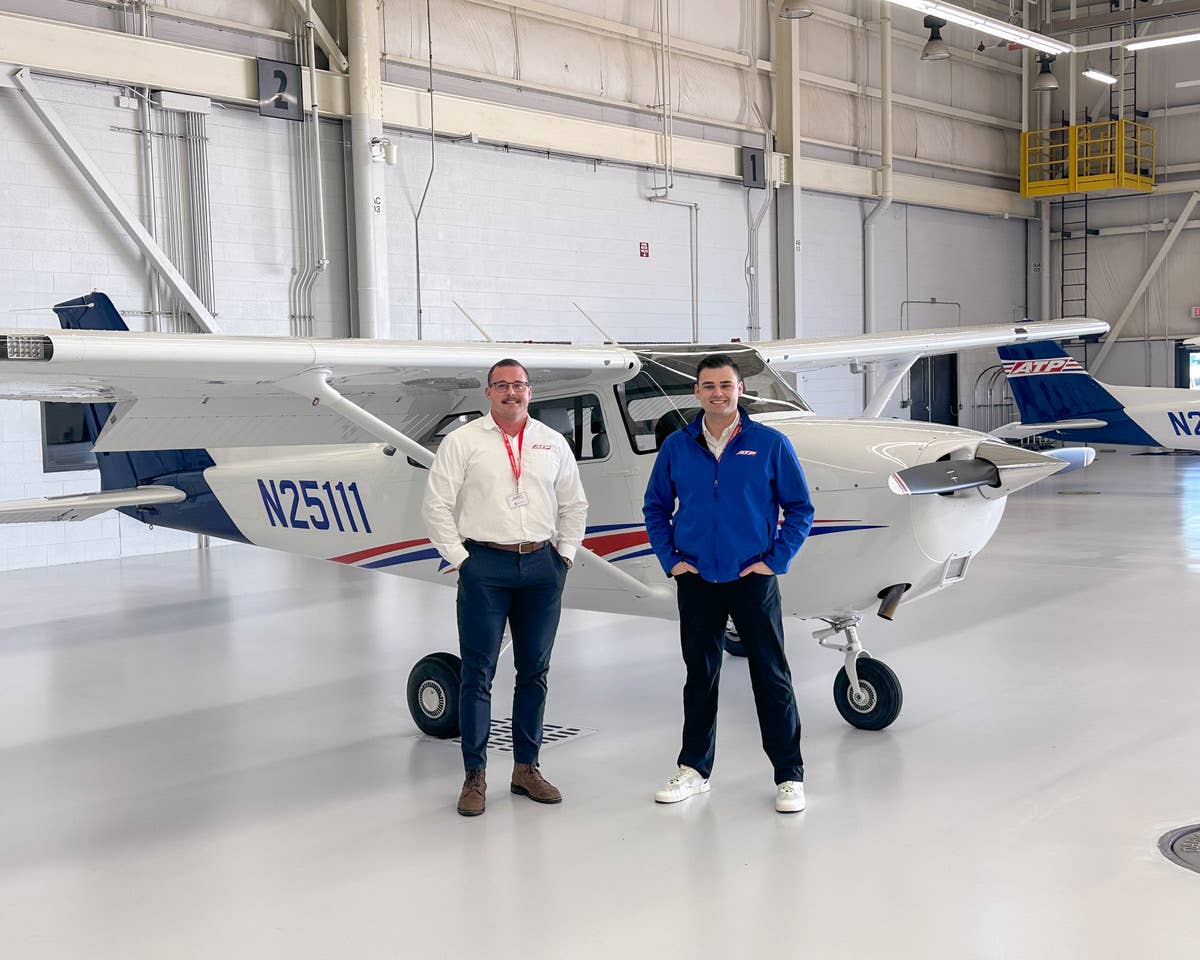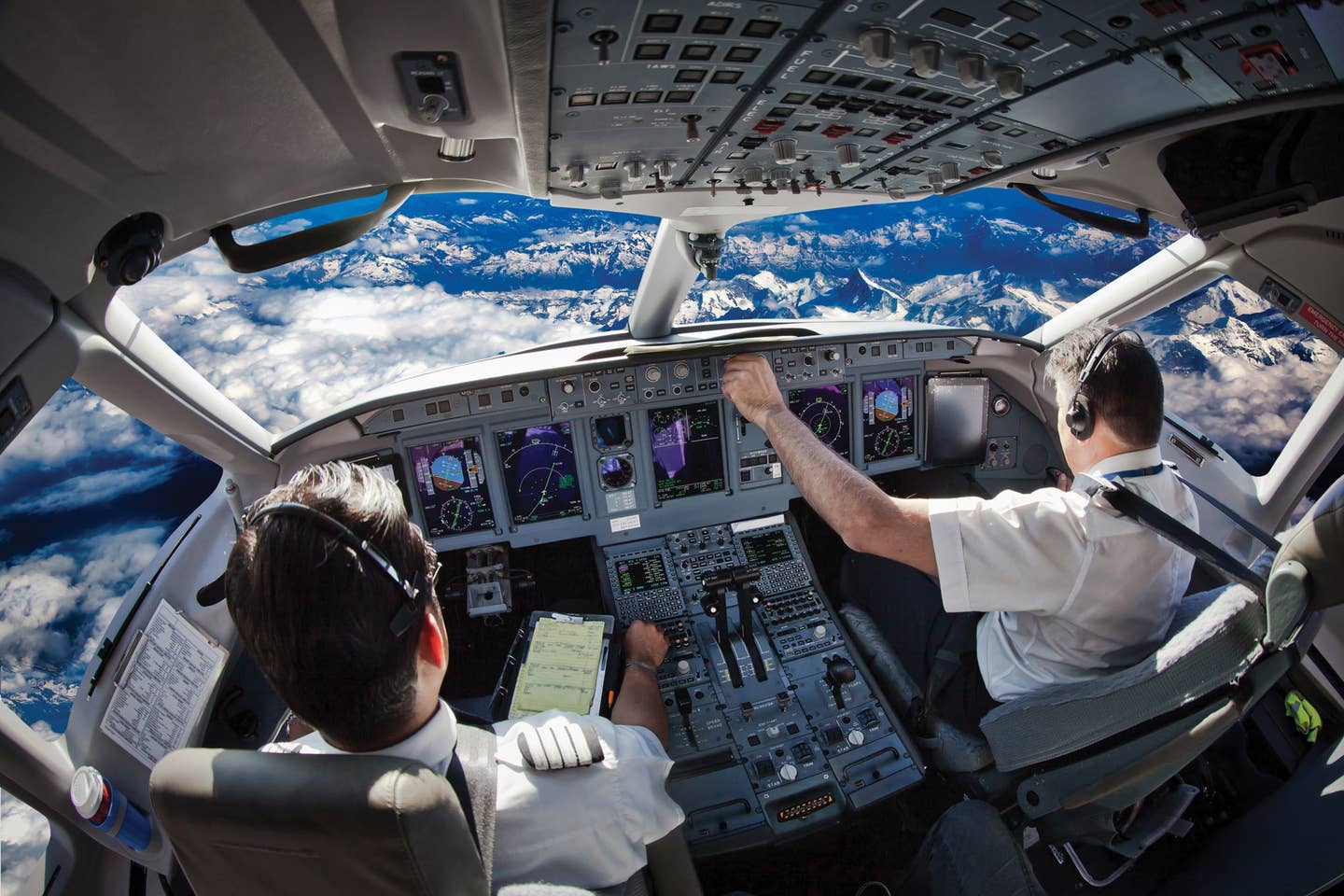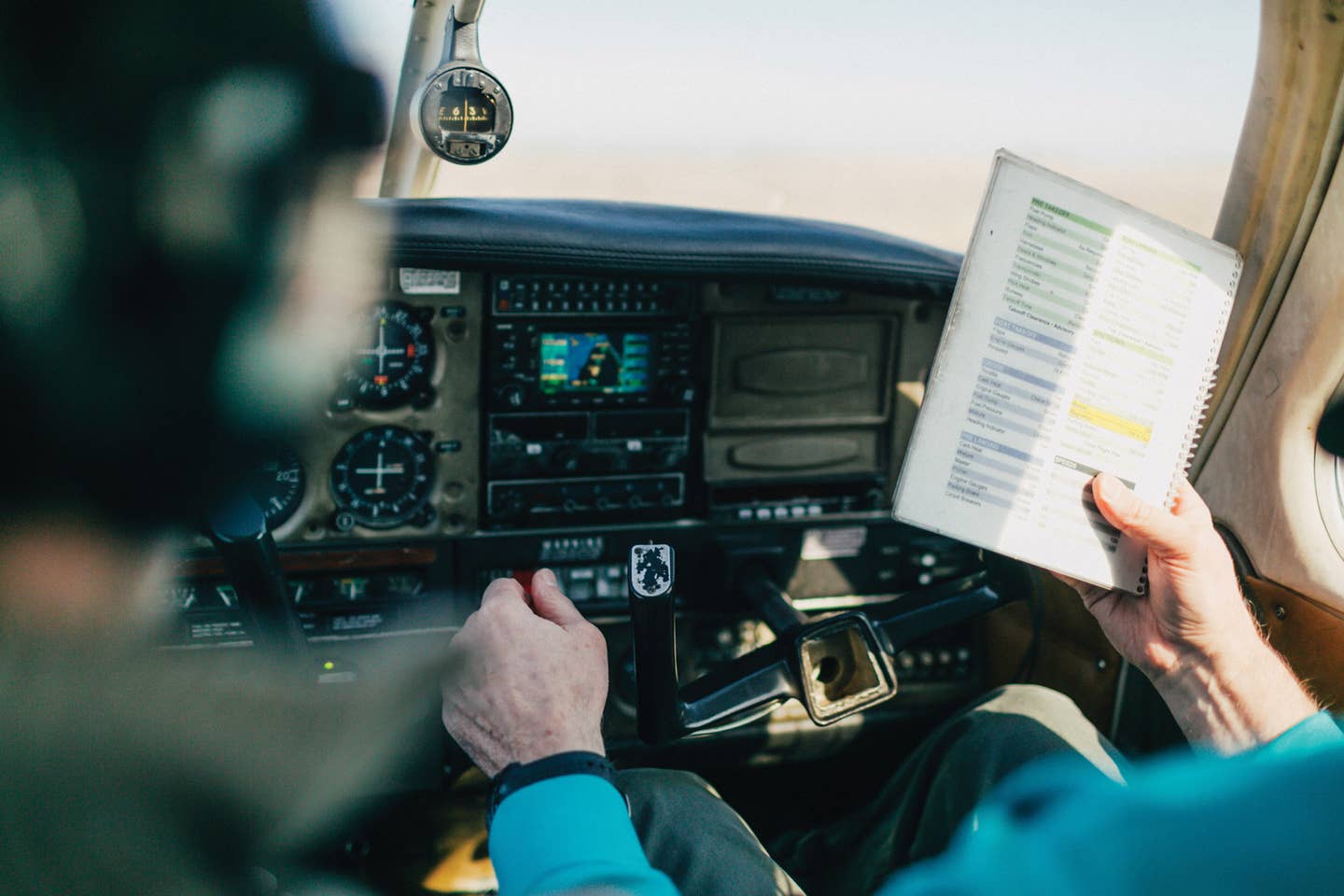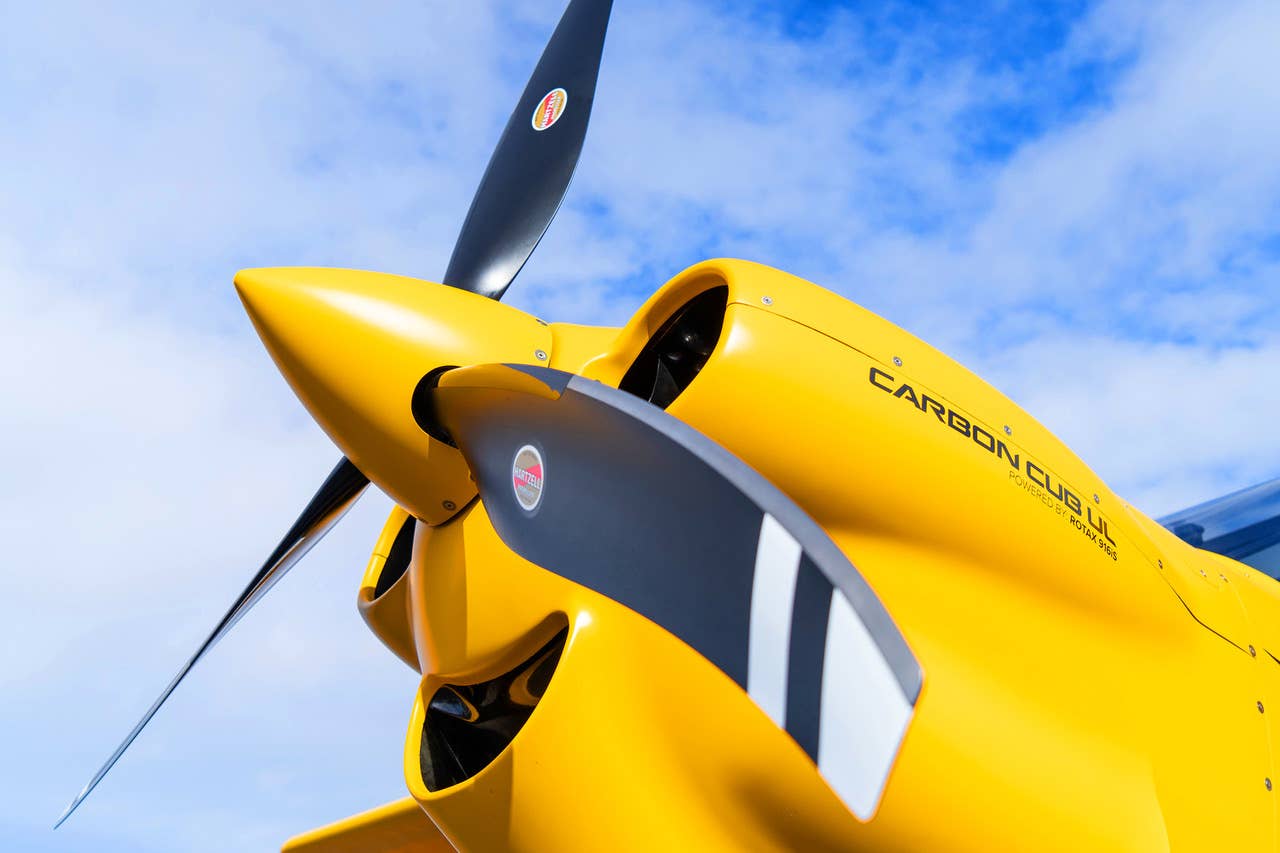A New License To Learn
Advanced training leads to more than just proficiency; it can also save lives
 Photo courtesy of SimCom Training Centers |
A few weeks ago, my friend Ray recounted a scary experience he'd had in his high-performance single while on a trip with his wife and daughter in IMC and at night. When he went to engage the autopilot, the airplane started to climb suddenly. He disengaged the autopilot, but the airplane continued to pitch up even more steeply. He pushed the electric trim switch, to no avail. He came back on the throttle, but it wasn't enough. He pushed the yoke with all the force he could, but knew he couldn't hold the nose down for long; eventually, his arm muscles would give out. His thought at the time was, "My family; I can't let anything happen to my family..."
Ray, though, didn't give in to panic. He remembered the timeworn adage of "flying the airplane" first and foremost. As he shoved with both arms on the yoke, managing to hold down the nose just above the horizon, he remembered his training. Ray had recently taken a simulator refresher course. He's one of those pilots who's constantly getting a new rating. He calls it "a life insurance policy for me and my family."
Ray flashed to the emergency procedures he had learned weeks before. He recognized the condition as runaway trim---something he had trained for in the sim---and he quickly reached over and yanked the electric trim circuit breaker. Instantly, he felt the yoke pressure release and the airplane regain a normal attitude.
I thought about how I would've performed in that same situation. I wasn't positive I would have been as composed as Ray was. Worse yet, I know of many pilots who would likely have panicked. Ultimately, Ray and his family were saved because of his training.
 Getting back into the classroom for advanced training is essential for maintaining pilot proficiency and staying safe in the event of an in-flight emergency. (Photo: Ron Csuy, SimCom Training Centers) |
Advanced Ratings
One of the best investments pilots can make is earning an instrument rating. Jeff Kramer is a great example of a pilot who recognized the tangible benefits. He earned his private certificate and flew for 200 hours, but stopped because of marriage, kids, mortgages and other commitments. He couldn't get flying off his mind, so he returned 23 years later. "My goal was simply to take weekend trips within a 500-mile radius of where I live in Wisconsin," says Kramer, "But the weather here grounds you a lot of the time."
To accomplish his goal, Kramer began training with AFIT (Accelerated Flight & Instrument Training, www.afit-info.com), an IFR training operation that comes to you, immerses you in dedicated training and guarantees you'll finish in 10 days. Not only did Kramer finish, but his wife went through the program as well, and now both are instrument-rated.
Some pilots don't realize that there are many paths for advanced training, above and beyond the instrument ticket. You can even train while getting paid for it. Gulfstream Training Academy (www.gulfstreamacademy.com) operates an interesting program with exactly that approach.
Pilots accepted to Gulfstream arrive with their private, instrument, commercial and multi-engine ratings. After three months of Part 121 training, students move into the cockpit of Beech 1900s, carrying passengers and operating as Gulfstream International Airlines, flying international routes to Cuba and the Bahamas. Pilots are hired as first officers, gaining turboprop time while earning a full salary. Training costs, including more than 250 hours of turbine time, are less than $30,000.
One graduate, Ken Lindsay, likes the fact that he can gain jet time immediately. "I can fly for Gulfstream in a period of three months and build some real-time turbine time," he says. Graduate Laurie Thyrre, who's now a Southwest Airlines pilot, adds that working as a first officer while you're training saves time: "You can shave two or three years off the process of going to a major airline."
But in today's economy, some people question the notion of even wanting to become an airline pilot. Bobby Pinto, a pilot recruiter for Gulfstream, says the issue of age-extended pilots will create an impending hiring boom. "Pilots who extended their airline careers when the maximum age was raised to 65 are going to be retiring in three years," says Pinto. "The only choice is to replace them or raise the limit again to 70, and that's not going to happen. The airlines are going to need pilots quickly."
 Aerobatics and upset recovery training allow a student to take an aircraft to the edge of its performance envelope. |
Simulators
Simulator technology affords another array of options for pilots looking for a challenge or a way to boost their careers. Pilots can choose from type-rating and recurrency programs in just about any popular jet, turboprop or advanced piston single. Simulators are being used more and more in transitioning new or existing pilots to technically advanced aircraft such as the Cirrus and Diamond. Pilots come to these facilities to experience situations that would be difficult or dangerous to practice in the actual aircraft.
Tyler West travels 1,500 miles from his base in New Mexico to SimCom's facility at Vero Beach, Fla., to receive annual recurrency training in the Piper Mirage. "The true test of effective training came during my last session in our plane," relates West. "We were climbing out when the distinct smell of electrical smoldering filled the cockpit, accompanied soon after by billowing smoke." The situation was one West had practiced just days before in the simulator. "The methodical sequence of actions used to deal with the situation seemed almost routine," he notes. He was able to address the emergency without ever compromising the safety of his mission.
The value of scenario-based training in simulators is obvious. Jim Clutter, president of SimTrain (www.simtrain.net), a simulator facility that specializes in Cirrus training, says, "With scenario-based training we can introduce multiple failure modes so you can see how you'll react to emergencies before you face them." Another advantage of sim training is that time is compressed; you can practice many types of situations in an hour or two. It would take much longer to find and experience those same scenarios in the actual airplane.
Wally David, CEO of SimCom (www.simulator.com), jokes that simulator training is the best way to learn advanced procedures because of the ability to repeat emergency exercises. "If you crash in the simulator," he says, "you get to put in a dollar and go again."
Aerobatics & Emergency Training
John Mayhew is a retired Northwest captain and check airman with 30,000 hours of flying. "If I could, I would make it a rule that every pilot get aerobatic training and earn their instrument rating," says Mayhew. "Those two things would reduce GA accidents dramatically."
Rich Stowell, a nationally recognized CFI and author of books on spin and emergency-maneuver training, also thinks all pilots should receive training in unusual attitudes. "Fear drives too many instructors today," says Stowell. "You have fearful instructors teaching fearful students---especially in the areas of stall and spin training." Both Mayhew and Stowell feel that aerobatic training instills confidence by showing pilots how the aircraft behaves on the outside edges of its performance envelope. "It teaches what the airplane can and cannot do," adds Mayhew.
Saving Lives
The net result of additional training is added safety. Kyle Lyons, of RTC Pilot Training (www.rtcpilot.com), notes, "Pilots start getting complacent after flying only a few months, and simulator training gets them to think about the basics again to make sure they haven't lost those stick-and-rudder skills." Advanced training forces us to constantly learn new skills and to examine our limitations.
It's important that pilots not think of advanced training only as earning expensive type ratings in exotic, full-motion simulators, or spending tens of thousands on little-used ratings. Most pilots' budgets could support something as basic as a tailwheel endorsement or upset recovery course. Each carries tremendous benefits and imparts important skills.
I think about Ray fighting the snake that was his runaway aircraft, high in the clouds on a dark night with his scared family. I think about what could have happened and, instead, what did happen. I go back and hit the books and start thinking of getting more training because, as the old saying goes, a pilot should never stop learning.

Subscribe to Our Newsletter
Get the latest Plane & Pilot Magazine stories delivered directly to your inbox








